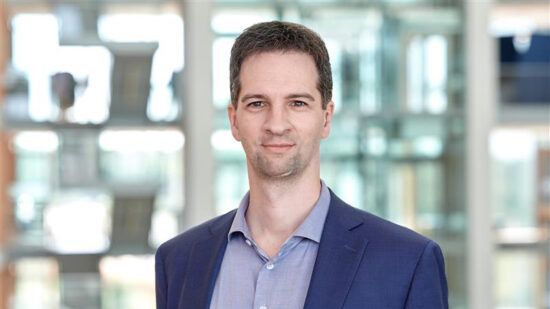Aviva Investors’ chief responsible investment officer Steve Waygood has called on leaders to leave nothing on the table at COP27 and repurpose international financial architecture to direct capital flow to developing countries and sustainable solutions.
He warned failing to act could potentially lead to financial collapse or even a Third World War.
In this video interview with ESG Clarity‘s global head of ESG insight Natalie Kenway, Waygood, who has been to every COP since COP6, said the “current trajectory of climate change means potentially the collapse of civilization as we know it by the end of the century” unless the political dial is turned towards the best possible outcomes.
He said he has left previous COPs feeling like things had been left unresolved – a “global governance failure” – and highlighted that micro stewardship is “never going to be enough”.
Waygood urged leaders to “pay companies to do the right thing and cost to do the wrong thing” or face a very worrying outlook for global stability and global peace: “I could quite easily see it precipitating a Third World War.”
The full video interview is above, and written transcript is below.
NK: I wanted to ask you some questions around the upcoming COP27 in November. First of all, what are your expectations or what’s on your wish list from October 2012?
SW: My wish list, well, I wish they were a lot better at managing climate change! If you look back, humanity has known for over a thousand years that the climate has changed over history. We’ve known since roughly 1880 that burning coal causes the climate that we’re in to change. And I remember when Jim Hansen was addressing Congress, and since those days in the 1970s-80s, where we’ve known climate change has been an issue and enshrined the UN Framework Convention on Climate Change. It’s called COP27 for a reason – it’s the 27th time we’ve all come together.
So, for a long-term investor looking at the physical risks, where the science is now so much clearer that these physical risks of even 1.5 degrees, or even 2-3.5 degrees, they’re really unconscionable.
For those of us who work in the industry and know what the science is now telling us, we’re worried. The current trajectory of climate change means potentially the collapse of civilisation as we know it by the end of the century. This is huge.
When you look at even the progress that was made at Glasgow, where there was relatively good progress relative to what other COPs have done, and then you look at the scale of that crisis and ask yourself, is it enough? And unfortunately, the blunt, honest reality, free from any kind of politics, is it’s nowhere near enough.
I think long-term investors worried about the existential crisis and the physical risk of climate change presents will be disappointed almost with the best outcome possible of COP27. We have to ask ourselves what more can we do as investors to shift the political dial so that we get what we need out of this process that has to be made to work. There’s nothing else.
NK: How can we build on the progress that you mentioned that was made at COP26? And what are the key things to be looking out for this year?
SW: Well, one of the key things to look out for, on downside risk, is there’s an enormous conversation expected around loss and damage. Another way of thinking of that in non-UN language is reparations to those countries that have experienced huge damage and, therefore, economic loss over the last few hundred years. Look at, for example, what’s going on in Pakistan at the moment with the flooding. Bloomberg estimates the costs of that are over $30bn.
On loss and damage, given that it’s hosted now in Africa rather than the UK, we can expect the developing countries, not just of Africa but particularly there, to come together to say we need more by way of loss and damage reparations and even the $100bn that was agreed in Copenhagen, that’s still not flowing at the scale that the commitment was promised.
It nearly made it last year for COP, it was very close, but the OECD estimates still find that there’s a roughly $20bn shortfall on the year. I guess we need to ask ourselves, as I said, how can we change that? What can we, as private sector financial institutions who are really exposed to this coming financial crisis from climate change, what can we do to encourage those politicians that want to do more to be able to do it and change the needle in those countries where they haven’t quite yet cottoned on to the fact that this stuff is existential.
I’ve been going to COP since COP6. I haven’t gone to all of them, but you go full of optimism and then when you’re there it’s sometimes awe-inspiring when looking at how much is done by so many – tens of thousands of people really committed.
But you always leave with the sense of things having been left on the table unresolved and the whole thing not adding up to enough. That’s the kind of global governance failure, and I think we need to come up with solutions to that urgently. We have less than 10 years to change the trajectory of economic growth and the COPs are not enough at the moment, we need to be honest about that. The politicians tend not to be quite so blunt.
NK: We really don’t want anything else to be left on the table but with the current macroeconomic environment, there’s this consideration that there’s less focus on tackling climate change. People are talking about tackling climate change and the cost-of-living crisis together, but that’s really not happening, is it? What is your perspective on that? Do you think that there’s less focus on climate change now in this difficult environment?
SW: There’s a real contradiction within this. There’s the opportunity to build back better, as we already have had, people have been using the phrase from Covid, and think it depends on how the country responds.
If you look at the response, we weren’t expecting the US to be able to pass the Build Back Better Act, rebranded as it was the Inflation Reduction Act. It was a very clever piece of branding and amazing to see that come through at the very last hour. You’re right, this is deeply difficult and one of the things that I’ve learned from the Russia/Ukraine situation, having worked for nearly 30 years in this area, I feel confident that listed businesses have a trajectory for change or transition that we can encourage as investors and to take. Even some of the state-owned enterprises in Russia, Saudi Arabia and Brazil, they’re exposed to more pressure from investors to transition. I know the sovereign wealth funds out there get the fact that they need to diversify their income.
I could see a plan forward that was plausible but having now realised that many developing countries, and in fact many developed ones too, they see oil and gas revenue as the way they protect their nation – it finances their defence system. That changes the texture of the Just Transition challenge in many ways, and it’s extremely worrying.
What do we have to do as investors? I think we need to recognise that micro stewardship, engaging with individual companies, is never going to be enough. It doesn’t change the profit motive or the fundamentals of the companies engaging with one iota. You’re simply encouraging companies to do the right thing morally, or maybe because there’s a business case for them to be more eco-efficient. As long as it pays to dig stuff out of the ground and burn it someone is going to do that.
I think as long-term investors, asset owners and asset managers need to come together and challenge the central banks and the finance ministries of the countries that we lend money to, which, let’s be honest, is pretty much all of them. We need to challenge them to grab the nettle on climate change and make it pay for companies to do the right thing and cost to do the wrong thing. We need to change the economics, which means in the jargon, internalise the externalities. We all know what that means; let’s all call for a cost of carbon that’s sufficiently material to motivate capital to be reallocated at the pace and scale that’s needed to deal with the climate crisis.
We need nothing short of a complete rethink of the international financial architecture to repurpose it so that it can help capital flow from where it is – developed countries – to where it needs to be – developing countries – so that we all can secure a future that we would wish to retire into rather than one where there’s climate carnage and chaos.
Potentially, and I know this is going to sound hyperbolic, but when you look at how many people would need to migrate due to a three degrees world, we’re talking about billions of people having to migrate from where they live today. Geopolitically, we’re talking about a very, very worrying outlook for global stability and global peace, and I could quite easily see it precipitating a Third World War.
Given that the financial architecture was designed to stop that happening, I think it’s important that we rethink it now that we know that its current design is going to lead to ‘business as usual climate change’ of around about 3.5 degrees. It’s that big.
NK: Wow. Some big statements there. Thanks very much, Steve, for your insights. It’s always really refreshing to have a chat with you. Thank you for your time.
SW: Thank you for the invitation. Natalie, it’s always a pleasure.








